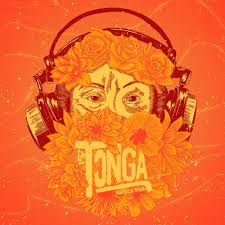 CUBANERIAS: PARA NOSOTROS UNA ‘TONGA’ ES MUCHO Y UNA ‘ÑINGA’ ES UN POQUITO.
CUBANERIAS: PARA NOSOTROS UNA ‘TONGA’ ES MUCHO Y UNA ‘ÑINGA’ ES UN POQUITO.
Desde el comienzo de mis estudios primarios aprendí las unidades de medida más comunes y conocidas universalmente para medir: la estatura, el volumen, la distancia y el peso. Sin embargo cuando crecí me di cuenta que los cubanos tenemos nuestras propias medidas para referirnos a determinada cantidad.
Lo más probable es que si a cualquier persona del mundo le pregunten qué es una “tonga” se quede literalmente en Babia o responda que es una islita en medio del Océano Pacífico. Sin embargo si se tratase de un cubano no dudaría en responder que una “tonga” es una gran cantidad, o un “montón, bulto, burujón puñao”.
Por ejemplo cuando alguien le preguntaba a mi mama si necesitaba algo de azúcar ella respondía: “-una ñinga nada más”, de ahí aprendí que ñinga era poca cantidad.
Pues sépase que estas palabras no salieron de la nada precisamente son un legado que nos dejó la cultura africana, específicamente la cultura Bantú cuya lengua matriz es el Kikóngo, esta precisamente no es la más conocida por los cubanos, quienes tenemos una especial tradición con el panteón Yoruba, sin embargo varios estudios han demostrado que la cultura Bantú, cuya religión es denominada genéricamente en Cuba como Regla de Palo Monte, ha hecho numerosos aportes a nuestro idioma.
En cuanto a las unidades de medidas que tenemos en la isla además de una ñinga o una tonga, existe otra que usamos muchoen el argot popular, sin embargo todavía no encontré en mi persistente búsqueda donde se originó, ¿alguna vez cuando le han brindado una tacita de café usted no ha respondido? “- si quiero, pero un tilín nada más”. Bueno pues la palabra “tilín” o “tilincito” significa para nosotros los cubanos un poquito nada más.
 CUBANERIAS: FOR US, A ‘TONGA’ IS A LOT AND A ‘ÑINGA’ IS A LITTLE.
CUBANERIAS: FOR US, A ‘TONGA’ IS A LOT AND A ‘ÑINGA’ IS A LITTLE.
From the beginning of my primary studies, I learned the most common and universally known units of measure for measuring: height, volume, distance, and weight. However, when I grew up I realized that Cubans have our own measures to refer to a certain amount.
Most likely, if anyone in the world is asked what a “tonga” is, they will literally stay in Babia or answer that it is a small island in the middle of the Pacific Ocean. However, if it were a Cuban, I would not hesitate to answer that a “tonga” is a large quantity, or a “heap, lump, burujón puñao.”
For example, when someone asked my mother if she needed some sugar, she would answer: “-una ñinga, nothing more”, from there I learned that ñinga was a small quantity.
WHERE DO THE SENTENCES COME FROM?
Well, let it be known that these words did not come out of anywhere, they are precisely a legacy that the African culture left us, specifically the Bantu culture whose mother tongue is Kikóngo, this is precisely not the best known by Cubans, who have a special tradition with the Yoruba pantheon, however, several studies have shown that the Bantu culture, whose religion is generically known in Cuba as the Rule of Palo Monte, has made numerous contributions to our language.
As for the units of measurements that we have on the island in addition to a ñinga or a tonga, there is another that we use a lot in popular slang, however, I still have not found in my persistent search where it originated, have you ever been given a cup of coffee you have not responded? “- if I want to, but nothing else.” Well, the word “tilín” or “tilincito” means for us Cubans a little nothing more.
Agencies/ HablandoCubano/ Celia Arevalo/ Internet Photos/ Arnoldo Varona/ www.TheCubanHistory.com
THE CUBAN HISTORY, HOLLYWOOD.










